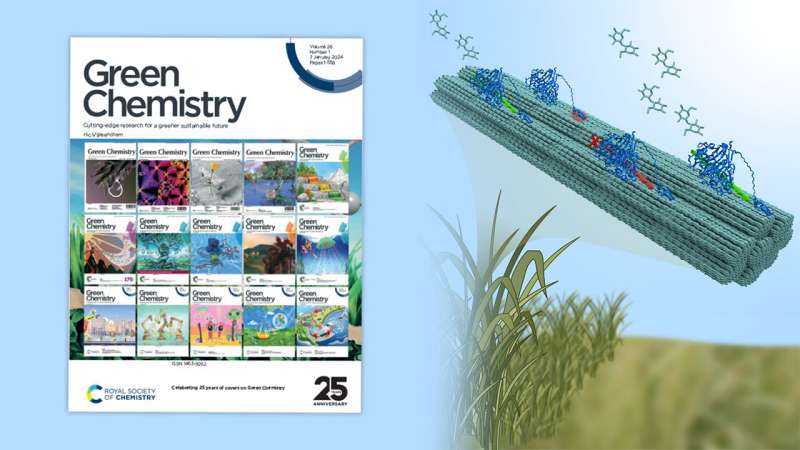This article has been reviewed according to Science X's editorial process and policies. Editors have highlighted the following attributes while ensuring the content's credibility:
fact-checked
peer-reviewed publication
trusted source
proofread
Using agricultural residues for fuel and chemicals

A Lawrence Livermore National Laboratory (LLNL) scientist is part of a research team shedding new light on how to access the sugars locked up in plant materials in order to convert byproducts into new feedstocks for production of fuels, materials and chemicals.
Converting grasses, weeds, wood and other plant residues into sustainable products normally produced using petroleum products could be one of the keys to achieving carbon neutrality.
"The inherent value of biowaste plays a crucial role in promoting a circular bioeconomy by efficiently utilizing organic waste to create valuable products or energy, minimizing environmental impact," said Sankar Raju Narayanasamy, a LLNL physical chemist.
Narayanasamy teamed up with colleagues from the University of California, Davis College of Agricultural and Environmental Sciences, the UC Davis College of Engineering and the Berkeley Synchrotron Infrared Structural Biology (BSISB) Imaging Program at Lawrence Berkeley National Laboratory (LBNL) in the research, which ran from 2018 to 2023.
Their work, published in the Green Chemistry journal, is expected to help lower the technological barriers and make it easier for the sustainable conversion of plant material, including agricultural byproducts.
"We want to utilize plant residues and there is a lot of plant waste out there," said Tina Jeoh, a professor of biological and agricultural engineering at UC Davis.
Narayanasamy, Jeoh and two BSISB researchers at LBNL used a spectromicroscopy tool—called the Synchrotron Fourier Transform Infrared instrument—at Lawrence Berkeley to measure enzyme reactions in real time to changes in the environment. The technology allows for simultaneous imaging and chemical analysis.
Unlocking sugars
Biocatalysts, which accelerate chemical reactions, need sugars for certain conversions, such as fermentation. Cheap, renewable and sustainable sugars that don't compete with food demands are key to that transformation.
"These sugars are key to establishing a bioeconomy built on cycling renewable carbon for biofuel, biochemical and biomaterial alternatives to fossil fuel sourced versions," Jeoh said.
Finding a better way to unlock sugars could advance the technology used in sustainable production operations.
"Functional biological systems rely on chemistry taking place at the correct time and in the right place," Narayanasamy said. "Tracking the location and concentration of molecules over time is the key characterization step for these biological investigations.
"Determining location and concentration is relatively easy if the molecule of interest is produced at high concentrations or distributed over large areas, but accurately characterizing a small number of molecules produced in native biomass has remained a challenge for many researchers. And this becomes even more complicated when it has to be executed in an open environment," he said.
A technology development and demonstration by LLNL and LBNL researchers combined advanced manufacturing techniques, imaging, big data analysis and high-density microfluidics. It paves the way for future studies at LLNL for bio-national security applications that involve high-throughput characterization of biomolecules such as tissues, soil samples and biomass in their native state.
The technology at the Berkeley Lab's BSISB imaging resource allows researchers to analyze infrared wavelengths and characterize biochemical processes in both place and time.
"It actually really confirmed a lot of what we thought we were seeing, which is very exciting," Jeoh said.
More information: Tina Jeoh et al, Spatiotemporal dynamics of cellulose during enzymatic hydrolysis studied by infrared spectromicroscopy, Green Chemistry (2023). DOI: 10.1039/D3GC03279E
Journal information: Green Chemistry
Provided by Lawrence Livermore National Laboratory





















